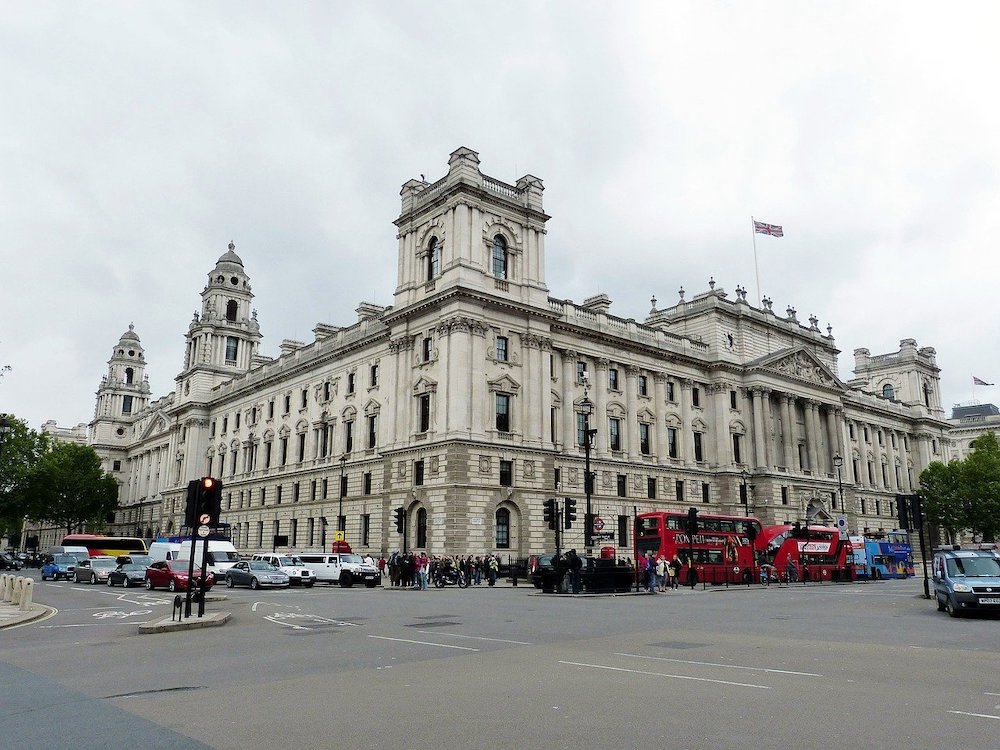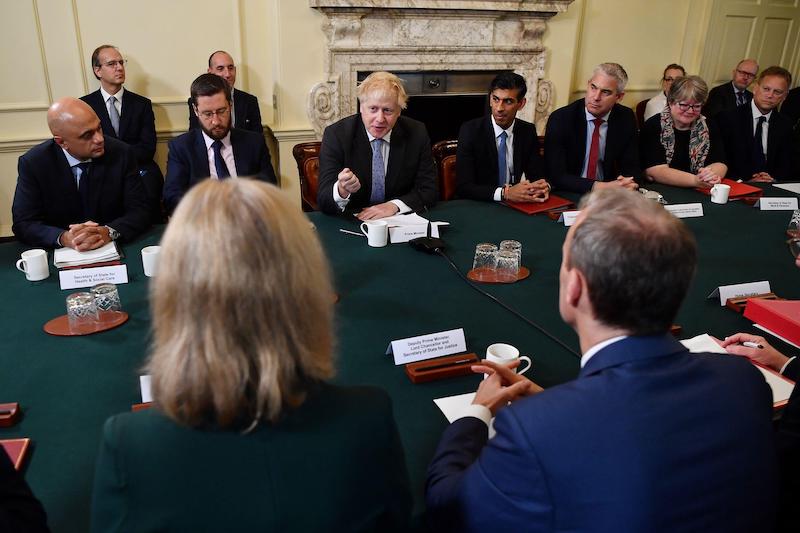CSW assesses progress against key actions set out in the Declaration on Government Reform, and explores how volunteering can boost skills and support key priorities
When then-cabinet minister Michael Gove launched the Declaration on Government Reform, he described the plan as “the fruit of discussion between ministers and officials; collaborative working, candid challenge between us and honesty about what needs to change”.
The plan included 30 actions to be completed by the end of 2021, grouped under three headings – people, partnership, performance – to which, Gove said, ministers and officials were “collectively committed” and should be held to account.
Here, CSW has assessed actions under the performance and partnership headings and rated them green (the goal has been completed), amber (the goal is not completed but looks set to be before the end of the financial year) and red (the goal is not on track to be completed). You can see how we rated progress on the people actions here.
Eleven “performance” actions range from improved used of data to stronger spending controls. Together, they aim to “modernise the operation of government”, according the document.
For “partnership”, there are just four actions, primarily covering the way in which politicians and officials work together to create a “unity of purpose and of action that is shared across government”.

Set Outcome Delivery Plans for each department, and ensure that every department has a Delivery Board with non-executive director involvement to monitor performance.
Outcome Delivery Plans – which list key priorities for each department and metrics on how those will be tracked – had already been published by the time the DGR was agreed in June 2021. Departments are now working on updated ODPs to be published for the next financial year, and with input from the Treasury and Cabinet Office.
Despite this progress, we have rated this action as Amber because CSW was unable to identify – neither on departmental websites nor by formal inquiries via both individual press offices and the Cabinet Office – a single department which has set up a delivery board with non-executive involvement to monitor progress against these plans.

Implement clear standards for all functions and ensure they are used consistently across government to improve quality and efficiency.
A 2021 review of government functions carried out by former Cabinet Office minister Lord Maude called for these cross-government groups to be given greater powers to set – and enforce – standards in their areas of expertise.
Each function has devised standards which set expectations for governance, roles and practices in their area of expertise. For example, the HR standards describe how departments should collect recruitment data, while the analysis standards set out the key stages and features of a good analysis project.

In September 2021, a letter was sent to accounting officers saying that “all central government departments and their arm’s-length bodies should have a plan in place to comply with each functional standard in a way that meets its business needs and priorities.” From 2022-23, functional standards will need to form part of departmental business plans and statements on their use should be included in annual reports.

Ensure all departments adhere to a strengthened spending controls framework.
The DGR explicitly links spending controls to the system of funtional standards, since these controls require departments to seek Cabinet Office or function-level sign-off for contracts that cross a designated spending threshold. Sign-off is only given if the department demonstrates it has met certain criteria based on the functional standards.
In his 2021 review, which also covered spending controls, Lord Maude described how controls enable departments to work together in a more joined-up way; push departments to plan ahead more effectively; and “build visibility and data” about overall government spending in particular categories like IT or property.
Departments and public bodies are already required to receive Cabinet Office approval for certain consultancy and professional services spending, as well as large digital projects. However, the action has a rating of Amber since assurance of the controls has not yet been rolled out – CSW understands this will happen from April 2022.

Establish the Central Digital and Data Office with a mandate and the expertise to drive digital and data innovation, including extending the use of data visualisation tools
The Central Digital and Data Office was established in February 2021 – some four months before the DGR was published – though at that time a blog from civil service chief operating officer said the aim was to create a “council of non-executive experts” who would provide leadership for the DDaT function. By April 2021 the CDDO, led by chief executive Joanna Davinson, had more explicitly taken over the leadership of digital and data strategies in government.
The office now conducts quarterly business reviews with departments, co-chaired with officials from the Treasury, to monitor departmental progress against DDaT commitments and priorities. A perm sec-level Digital and Data Board has also been set up to provide a cross-government view of these priorities.

Launch a single sign-on for online government services
The OneLogin project, launched in September 2020, aims to replace 191 accounts and sign-in systems currently in use across government, including the GOV.UK Verify system, which was set up to serve a similar purpose but has suffered poor take-up from departments and the public.

Led by Government Digital Service, the project developed a prototype in 2021, as well as conducting detailed user research and reviewing the lessons learned from GOV.UK Verify. In the Spending Review, the OneLogin project received £100m funding over three years. The team has not met the target of launching a completed sign-on service by the end of 2021, but is expected to do so within months as it works with the Disclosure and Barring Service to set up a new login system by April. Once this service has been set up, the team hopes to scale up quickly. In a blog published at the end of 2021, GDS director of digital identity Natalie Jones said: “We are working with other departments, directorates, agencies and individual services to build a clear, joined up and shared roadmap. It will enable services to understand when their required functionality will be available and give clear milestones and timelines for migration.”

Introduce mandatory reporting of the costs and risks of outdated IT systems, and ensure that no new IT systems are created without interoperability with other relevant government systems.
The 2021 Spending Review included £2.6bn of funding earmarked to update legacy IT and mitigate cyber risks, on top of £600m invested at the 2020 Spending Review.
While funding is allocated to departments individually, the work is being supported centrally by the CDDO’s chief technology officer. At the time of publication, this role was held in an interim capacity by Dan Bailey, who joined CDDO in August 2021 after a career in the prvate sector.
However, government has not yet achieved its aim of requiring departments to report on the costs and risks of their outdated IT kit. The CDDO is still working to develop a consistent view of what those costs and risks are, through a shared legacy IT framework. It discusses this issue at the quarterly business reviews held with departments.

Move all eligible major projects into the Government Major Projects Portfolio, publishing it with the names of dedicated and suitably qualified SROs for each project as a condition of approval.
The Government Major Projects Portfolio was established in 2013 to improve the way government’s most costly and complex projects are run. At that point, it comprised 199 projects with a combined whole-life cost of £399bn. Over the years, projects have left the portfolio as they were completed or scrapped, while others have joined, but the general trend was that the portfolio shrunk in size – falling to 125 projects in March 2020 – but not in value. The total cost of those 125 projects was £448bn. The most recent figures show this trend had been stopped in 2021, with the portfolio growing both in size and value: 97 projects were added while only 19 left, bringing the total to 184 projects worth a combined £524bn.
A letter sent to the PACAC in February 2022 suggests that a further expansion has happened since then, in line with the aim set out in the DGR to ensure all eligible projects are listed. A list of Senior Responsible Owners for each of these projects has been published each year for several years.

Institute the Government Major Contracts Portfolio, to improve the management of the most critical contracts.
A Government Major Contracts Portfolio has been in place since at least December 2020. A government playbook published that month discussing good practice for sourcing and contracting construction work said that the portfolio “tracks the government’s most complex and strategically important services to complement the Government Major Projects Portfolio”. However, the first meeting of the newly established Government Major Contracts Portfolio Board took place in February 2022, CSW understands. The GMCP includes 78 large or significant contracts, with 17 more expected to be added in due course once data around them has been through the appropriate validation processes.

Set up the Evaluation Task Force to ensure consistent, high-quality impact evaluation and transparency, and a refreshed delivery unit to drive progress on the government’s headline priorities.
The creation of an Evaluation Task Force within the Treasury was first announced in the 2020 Spending Review. In 2021, the task force was given joint control of an evaluation accelerator fund worth £15m over three years to help government fill “strategic evidence gaps” around which policies work well. The SR21 document said the task force had worked with government departments in “important areas” to ensure spending proposals are supported by robust evaluation plans. Examples include embedding experimental evaluation into flagship programmes such as Help to Grow and the Youth Investment Fund, to strengthen the evidence base for future decisions.
“A new Evaluation Taskforce in the Cabinet Office will ruthlessly scrutinise the effectiveness of policies against the claims people like me make for them”
Michael Gove
The latest No.10 Delivery Unit was established in May 2021 following a review of government delivery led by Sir Michael Barber, a former civil servant who led a previous delivery unit under Tony Blair. The unit is structured around the prime minister’s main priorities of levelling up, net zero, health and social care, education, jobs and skills and crime and justice. It was originally led by Dame Emily Lawson - former head of the NHS Covid vaccination programme – before she returned to the NHS in October 2021. Johnson had hoped to bring Dame Emily back to No.10 as permanent secretary, but this has not been confirmed.

Commence a review programme for arm’s-length bodies and increase the effectiveness of their departmental sponsorship, underpinned by clear performance metrics and rigorous new governance and sponsorship standards.
Departmental arm’s-length bodies were already subject to both “tailored reviews” looking at their individual structure and performance, and “functional reviews” that considered groups of ALBs and agencies – for example, those with regulatory responsibilities or those working in related policy areas – to identify opportunities for reform.
As the last public bodies reform strategy ran only until 2020, a new Public Bodies Reform Programme has now been established across the Treasury and the Cabinet Office and is expected to publish new guidance for reviews of public bodies shortly. Meanwhile, departments have identified which ALBs they will prioritise for review, and the Cabinet Office and Treasury team has delivered induction events for new public body non-executives to support their development and improve governance of these organisations.

Ensure all data is as open as possible to public and third parties.
When CSW requested an update on this action, we were pointed towards two initiatives. Firstly, GDS and CDDO’s work to help departments share data more readily by, for example, improving quality, availability and access to data as well as developing standards and assurance that can support data sharing.
Secondly, the Office for National Statistics’ new Integrated Data Service, which gives researchers access to data from a range of sources – as well as visualisation and analysis tools – through a single, cloud-based system. The IDS was launched for private beta-testing in October 2021, focusing on three policy areas and accessible only to government researchers. At the time, it was expected to be opened for tsting by researchers outside government in spring 2022. CSW understands it is now hoped that it will be operational in 2023.

Ensure all data is as open as possible to public and third parties.
With over 136,000 buildings covering 156 million square metres of space, compiling a Domesday Book of central government property is no mean feat. The Cabinet Office’s latest State of the Estate report, published in December 2021, made a step towards the goal by grouping property by portfolio (such as offices, courts, prisons) for the first time and noted that departments have started to follow new, centrally-mandated reporting standards which should also support the work. However, according to a letter sent by Cabinet Office minister Steve Barclay to the PACAC in February, “the scale of the activity required” to create the central record “has been more significant than anticipated and has also encountered some delays”. So the database needed to fulfil this is still in the design and build phase, with core functionality expected to be ready for testing and a private beta rollout in the next financial year.

Revise guidance on cabinet committee attendance to ensure relevant senior officials attend and participate where appropriate, and to replicate across all relevant committees best practice on tracking actions and decisions.
The National Security Council was the first ministerial committee to involve relevant officials as participants rather than simple record-keeping observers, but the approach came into its own as the UK prepared to leave the EU. The EU Exit (Operations) Committee – known as XO and chaired by Michael Gove – met daily to track progress of exit preparations and included a changing roster of officials. According to an Institute for Government analysis of the system, “giving officials a seat at the table, rather than have them sit silently at the back” meant that “ministers were able to draw on their analysis and expertise throughout the meeting.

Photo: PA Images/Alamy Stock Photo
The XO committee sat underneath an EU Exit Strategy (XS) committee which included just five senior ministers. This model of having a small strategy committee and larger operational committee including relevant officials has now been extended to a number of policy areas – the latest list of cabinet committees published in October 2021 includes four examples.
CSW understands work has begun on the second part of this action, relating to best practice on tracking actions, but has not yet been completed.

Hold extraordinary cabinet meetings at least once a year, bringing together cabinet and the permanent secretaries, to review progress on the government’s key priorities.
In another example of government setting itself a task which had already been completed, CSW understands that this action is considered to have been fulfilled by the meeting between cabinet ministers and permanent secretaries at which the Declaration on Government Reform was agreed.
This was the first time all perm secs and cabinet ministers had met together and there was, according to the speech given by Michael Gove to launch the DGR, “a unity of resolve that we need to see these changes through”.
Another such meeting is expected to be arranged in 2022, when ministers and officials will restate their committement to the DGR.

Complete a review of models of accountability for decisions, drawing on international best practice and experiences during the pandemic and taking account of the role and design of ministerial directions.
Complete a review of civil service governance, including consideration of the appropriate roles for senior officials, non-executive directors and ministers
These two linked reviews form the core of government’s ambitions under the “partnership” heading. The full text of the document describes the “unique partnership that exists between Ministers and officials, who work together to create and deliver policy” as one of the great strengths of the UK system of government.
To improve this partnership, it says, there should be a “unity of purpose and of action” created by greater accountability and clearer roles and targets for both ministers and officials. Establishing this clarity will “create an environment that supports open, collaborative policy-making and well-judged risk-taking, with the focus on delivery”.
While the focus on international comparators may reflect ministerial preferences, the commitment to learn from experiences in the pandemic may reflect the influence of cabinet secretary Simon Case. Speaking at the University of Newcastle last year, Case explained how he hoped to avoid making the same mistake as senior officials in the 1940s who did not set up a formal review of how the state performed during the Second World War and subsequently – according to Case and his one-time PhD supervisor Lord Hennessey – missed the chance to radically change Whitehall for the better. “To avoid the curse of the ‘missed opportunity’ now, we must hold on to the lessons we have learned – good and bad,” Case said.
Neither of these reviews have yet been completed, but officials are finalising the scope and approach of each with ministers. Reviews are expected to start in the spring.